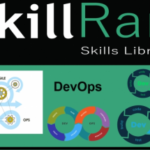How to Build a Personal Brand from Scratch:Building a personal brand is essential for professionals looking to establish their presence in their industry, attract opportunities, and create a lasting impression. Whether you’re an entrepreneur, freelancer, or employee, a strong personal brand can differentiate you from the competition and open doors to new possibilities. Here’s a step-by-step guide on how to build a personal brand from scratch.
1. Define Your Purpose and Goals
- Identify Your Why: Understanding your motivation is crucial. Ask yourself what you want to achieve with your personal brand. Are you looking to attract clients, secure a job, or share your knowledge?
- Set Clear Goals: Outline specific, measurable, achievable, relevant, and time-bound (SMART) goals for your personal brand. This will guide your efforts and keep you focused.
2. Know Your Audience
- Identify Your Target Audience: Determine who you want to reach with your personal brand. Consider their demographics, interests, and challenges.
- Research Their Needs: Understand what your audience values, the questions they ask, and the type of content they consume. This insight will help tailor your messaging and offerings.
3. Establish Your Unique Value Proposition (UVP)
- Identify Your Strengths: What skills, experiences, or perspectives do you bring to the table? Focus on what sets you apart.
- Craft Your UVP: Develop a clear statement that encapsulates your unique qualities and how they benefit your audience. This will be the cornerstone of your personal brand.
4. Create Consistent Visual and Verbal Branding
- Choose Your Visuals: Select colors, fonts, and imagery that reflect your personality and professional image. Consistency in visuals helps reinforce your brand.
- Develop a Tagline: Create a memorable tagline that summarizes your personal brand and what you stand for.
- Craft Your Story: Develop a personal narrative that highlights your journey, values, and mission. This story will resonate with your audience and create a deeper connection.
5. Build an Online Presence
- Create a Professional Website: Develop a personal website to showcase your portfolio, resume, and blog. This serves as a central hub for your brand.
- Utilize Social Media: Choose platforms that align with your goals and audience. LinkedIn is excellent for professional networking, while Instagram and Twitter can help you share your personality and insights.
- Optimize Your Profiles: Ensure all your online profiles are complete, professional, and reflect your brand consistently.
6. Produce High-Quality Content
- Start a Blog or Vlog: Share your expertise, insights, and experiences through articles or videos. This establishes you as a thought leader in your field.
- Engage on Social Media: Post regularly on social media to share valuable content, engage with your audience, and showcase your personality.
- Use Different Formats: Experiment with various content types, such as infographics, podcasts, or live streams, to reach a broader audience.
7. Network and Collaborate
- Connect with Industry Professionals: Attend networking events, webinars, and conferences to meet people in your field and expand your network.
- Engage with Influencers: Follow and engage with influencers in your industry. Comment on their posts, share their content, and consider collaboration opportunities.
- Join Online Communities: Participate in relevant forums, groups, and social media communities to share your expertise and connect with like-minded individuals.
8. Leverage Testimonials and Endorsements
- Collect Feedback: Ask clients, colleagues, or mentors for testimonials that speak to your skills and character. Positive feedback builds credibility.
- Showcase Your Work: Highlight case studies, successful projects, or achievements on your website and social media to demonstrate your expertise.
9. Monitor Your Brand’s Progress
- Track Your Online Presence: Use tools like Google Alerts to monitor mentions of your name or brand online. This helps you manage your reputation and address any issues promptly.
- Analyze Engagement: Use analytics tools on social media and your website to assess the effectiveness of your content and adjust your strategy accordingly.
10. Be Authentic and Evolve
- Stay True to Yourself: Authenticity is crucial in personal branding. Be genuine in your interactions and content, and let your personality shine.
- Adapt and Grow: Personal branding is an ongoing process. Be open to feedback and evolve your brand as you grow professionally and personally.
Conclusion
Building a personal brand from scratch takes time, effort, and commitment, but the rewards are well worth it. By defining your purpose, knowing your audience, and consistently delivering value, you can create a strong personal brand that opens doors to new opportunities and enhances your professional reputation. Remember, your personal brand is a reflection of who you are—make it authentic and impactful!
Introduction to Personal Branding
In today’s digital landscape, the concept of personal branding has emerged as a crucial element for individuals seeking to establish and communicate their identity in a professional context. Personal branding is the intentional process of promoting oneself and one’s career as a brand. It involves defining what you stand for, showcasing your expertise, and establishing a reputable online and offline presence. This can significantly impact how others perceive you, making it a vital aspect for anyone looking to advance their career or venture into entrepreneurship.
One of the primary benefits of developing a robust personal brand is enhanced visibility. In a world where competition is fierce, having a distinct online persona allows you to stand out amongst peers and attract attention from potential employers, clients, or partners. By consistently showcasing your skills and knowledge through various platforms—be it social media, blogs, or networking events—you create a recognizable figure people can associate with specific values and competencies.
Moreover, a strong personal brand fosters credibility. In an age where misinformation is rampant, trust is an invaluable currency. When you effectively communicate your authenticity, values, and abilities, others are more likely to perceive you as a reliable and knowledgeable professional. This trust not only opens doors for career opportunities but also encourages collaboration and networking, which are vital for growth in any field.
Lastly, personal branding can lead to greater career growth or entrepreneurial likelihood. By clearly defining your unique selling propositions and showcasing your achievements, you can attract more opportunities that align with your goals. Whether it’s influencing a hiring manager’s decision or convincing investors of your business acumen, a well-crafted personal brand can serve as a powerful tool in your professional arsenal.
Defining Your Brand Identity
Creating a solid foundation for your personal brand begins with defining your brand identity. This process involves a thorough understanding of your personal values, strengths, passions, and what sets you apart from others, often referred to as your unique selling proposition (USP). To embark on this self-reflective journey, consider starting with a list of your core values. What principles guide your decisions? Whether it’s integrity, innovation, or community service, identifying these values will help you align your brand’s messaging and actions.
Next, reflect on your strengths. Take stock of your skills, abilities, and experiences that differentiate you within your industry or community. You might want to conduct a SWOT analysis (Strengths, Weaknesses, Opportunities, Threats) to gain deeper insights. This exercise allows you to see how your strengths can be leveraged in the context of your personal brand while also acknowledging areas for growth.
Exploring your passions is equally important. Ask yourself what activities bring you joy and fulfillment. Consider how these passions can be integrated into your personal brand. For example, if you have a keen interest in sustainability, showcasing eco-friendly practices within your brand can resonate well with your audience.
Additionally, developing a unique selling proposition is crucial to standing out. This is where your insights from the previous exercises come together. Your USP should succinctly convey the value you offer that cannot be found elsewhere. One practical method is the brand positioning statement, which succinctly describes who you are, what you do, and who you serve.
Finally, document your findings and create a concise brand identity statement. This statement will serve as both a guiding beacon and a reference point as you navigate your marketing efforts. By clearly articulating your identity, you set the groundwork for building a robust personal brand that truly reflects who you are and what you stand for.
Identifying Your Target Audience
Understanding your target audience is a crucial step in building a personal brand from scratch. Knowing who you wish to reach will allow you to tailor your messaging and branding strategies effectively. A well-defined audience provides insights into their preferences, needs, and pain points, which is essential for creating meaningful connections through your brand.
To identify your target audience, begin with comprehensive audience research. This can encompass a variety of methods, including surveys, social media analytics, and industry research reports. By collecting data on potential clients, followers, or customers, you can discern trends and patterns that highlight their interests and behaviors. Additionally, engaging with your current audience via feedback forms or interactive content allows for deeper insights into their motivations.
Once you have gathered the necessary information, the next step is to create detailed customer personas. These fictional representations of your ideal audience members help in understanding their demographics, goals, and challenges. Consider including aspects such as age, gender, location, occupation, and interests in your personas. This not only allows you to visualize your audience but also assists in crafting tailored content and messaging that resonates with them.
Moreover, keeping your target audience in mind while developing your brand message ensures that your communication is relevant and purposeful. This alignment helps in fostering trust and creating a loyal following, turning interested individuals into advocates for your brand. Regularly revisiting and updating your audience understanding allows you to adapt as preferences change over time, thereby continually enhancing your brand’s relevance in the market.
Creating a Strong Online Presence
Establishing a strong online presence is a vital component of building a personal brand. The digital landscape offers numerous platforms where individuals can showcase their expertise, connect with their target audience, and communicate their unique value propositions. The first step in creating an online presence is selecting the right social media platforms that align with your personal brand goals. For instance, LinkedIn is invaluable for professional networking, while Instagram and Twitter may serve well for creative storytelling and engagement. Understanding where your audience spends their time online can significantly enhance your reach.
In addition to social media, having a personal website or blog acts as a centralized hub for your brand. This platform can host a portfolio, articles, and resources that reflect your skills and knowledge. An effective website ensures that visitors can easily navigate, providing them with valuable content while conveying your personality and professional ethos. When setting up your site, it is crucial to optimize it for search engines. This can be achieved through various strategies, such as utilizing relevant keywords, creating quality content, and enhancing user experiences with mobile-friendly design.
Consistent branding visuals and messaging across all channels is another essential aspect of a solid online presence. Employing a cohesive color scheme, logo, and fonts creates a recognizable visual identity that fosters trust and recognition. Similarly, maintaining a consistent tone and style in your messaging builds a coherent narrative about who you are and what you stand for. Regularly updating your online profiles ensures that your audience always has access to the latest information about your pursuits. By integrating these strategies, you will pave the way for a prominent and memorable personal brand in the digital world.
Content Creation and Value Offering
Content creation plays a pivotal role in establishing and enhancing a personal brand. It is essential for individuals seeking to differentiate themselves in a crowded marketplace. Through systematic content production, one can communicate expertise, demonstrate value, and connect directly with an audience. The creation of valuable and relevant content fosters relationships and builds trust, as it addresses the needs and preferences of the target audience.
To create effective content, individuals must identify their unique value proposition. This involves understanding what differentiates them from competitors and what specific knowledge or skills they can share. Knowing your audience is crucial; conducting research to understand their interests, pain points, and preferences will inform the type of content to produce. By aligning content with what the audience cares about, one can ensure its relevance and impact.
Various content formats can be utilized to reach audiences effectively. Blogs allow for in-depth exploration of topics and can boost search engine visibility through strategic use of keywords. Videos add a personal touch and foster engagement, suitable for platforms like YouTube or social media. Podcasts offer an audio format that can be consumed on the go, making them ideal for busy individuals. Social media posts serve as quick, digestible content, ideal for engaging with followers in real-time and fostering conversation.
Leveraging these formats effectively requires a mix of consistency and creativity. Developing a content calendar can help maintain a regular posting schedule, ensuring that the audience remains engaged. Additionally, repurposing content across different platforms can maximize reach and reinforce the message. By delivering valuable content across diverse formats, creators can significantly enhance their personal brand’s visibility and credibility.
Networking and Relationship Building
Networking plays a crucial role in the development of a personal brand. Establishing meaningful relationships can provide a strong foundation for your brand while expanding your reach within your industry. It’s not merely about shaking hands and exchanging business cards; it involves fostering genuine connections with individuals who share similar interests or goals. Engaging with influencers in your field presents an opportunity for collaboration and can significantly enhance your personal brand’s visibility.
To connect with influencers, start by following them on social media platforms and actively participating in their content discussions. Engage with their posts through thoughtful comments or questions that reflect your insight and interest. Additionally, consider reaching out via direct messages to introduce yourself. Be sincere and concise, expressing your admiration for their work while sharing your own goals. This approach demonstrates your willingness to learn and collaborate.
Engaging with peers can also contribute to a robust personal brand. Attend industry events, workshops, or conferences to meet like-minded individuals who can provide support, feedback, and potential collaboration opportunities. Networking isn’t limited to formal events; online communities such as LinkedIn groups or industry-specific forums can also be powerful avenues for building relationships. Participate actively by sharing your knowledge and insights, which will encourage others to engage with you in return.
Moreover, nurturing your relationships after initial contact is vital. Follow up with individuals you meet, whether in person or online, by expressing gratitude for their time or sharing relevant content that may benefit them. Strong relationships lead to collaborative opportunities, referrals, and shared insights, all of which can help you grow your personal brand effectively. Ultimately, cultivating a supportive network will empower you to navigate challenges and elevate your brand in today’s competitive landscape.
Consistency and Authenticity
When building a personal brand from scratch, the significance of consistency and authenticity cannot be overstated. Establishing a recognizable identity involves not only a clear message but also a defined voice and style that resonate with the intended audience. Consistency across various platforms—be it social media, blogs, or professional interactions—helps to reinforce this identity and creates familiarity. When individuals encounter the same tone and visuals repeatedly, they begin to associate these elements with the personal brand, ultimately increasing recognition and loyalty.
Moreover, authenticity plays a crucial role in personal branding. By staying true to one’s values and beliefs, individuals can cultivate a sense of trust and reliability among their audience. In an era where consumers are increasingly wary of superficiality, being genuine sets a personal brand apart. This requires introspection and a willingness to share one’s unique story, experiences, and perspectives. By doing so, individuals not only distinguish themselves from competitors but also foster a deeper connection with their audience. Authenticity creates a narrative that engages and inspires, enabling individuals to resonate on a personal level with their followers.
However, it is essential to understand that building a personal brand is not a one-time effort; it is a long-term commitment. Consistently delivering value while reflecting an authentic persona requires dedication and perseverance. Engaging with your audience regularly, maintaining the quality of your content, and evolving your personal brand as you grow are all pivotal to sustaining this journey. As branding is dynamic, feedback and adaptability are key components in ensuring that the voice and values remain aligned with the audience’s expectations. Ultimately, by prioritizing both consistency and authenticity, individuals can establish a personal brand that not only stands the test of time but also fosters trust and loyalty among their audience.
Monitoring and Evolving Your Brand
Establishing a personal brand is not a one-time effort; it necessitates regular monitoring and a willingness to adapt to changing circumstances. Assessing your brand’s performance is a vital component of this process. By utilizing tools like Google Analytics or social media insights, you can track various metrics such as engagement levels, follower growth, and audience demographics. These insights will help you understand which aspects of your personal brand resonate most with your audience.
Gathering feedback is another crucial step in monitoring your brand. This can be accomplished through direct surveys, social media polls, or informal conversations with your audience. Encouraging dialogue not only provides you with valuable insights but also fosters a community around your personal brand. Pay close attention to constructive criticism; it is often an indicator of areas needing improvement. Consider establishing regular feedback loops to ensure ongoing engagement with your audience, allowing them to have a voice in the evolution of your brand.
Conducting periodic brand audits is an effective way to evaluate your position in the market. This process involves reviewing your brand’s messaging, visual identity, and overall impact. Compare how your brand is perceived against competitors and analyze the effectiveness of your marketing strategies. Be prepared to pivot or refine your approach based on trends, audience preferences, and industry shifts to maintain relevance. Consistent evaluation ensures that your brand does not stagnate and continues to evolve in alignment with your goals.
In conclusion, monitoring and evolving your personal brand is vital for long-term success. By consistently analyzing performance metrics, seeking feedback, and conducting audits, you can effectively adapt your strategies to meet the demands of a dynamic market. This proactive approach will help secure your brand’s relevance and resonance, ultimately moving you closer to your personal and professional objectives.
Conclusion and Next Steps
Building a personal brand from scratch is a transformative journey that requires careful planning and consistent effort. Throughout this guide, we have explored the fundamental components of creating a personal brand that resonates with your target audience. By identifying your unique strengths, defining your values, and establishing a clear vision, you have laid the groundwork for a compelling brand identity. Your personal brand acts as a digital calling card, representing who you are and what you offer to the world. Thus, it is essential to approach this task with intention and authenticity.
As you move forward, consider reflecting on the key insights discussed in this guide. Begin by articulating your brand story—this narrative should encapsulate your experiences, accomplishments, and aspirations. Investing time in developing your online presence is crucial; ensure your social media profiles and website are aligned with your personal brand identity. Engaging with your audience through regular content creation, whether it be blogging, vlogging, or social media posts, will further enhance your visibility and credibility in your chosen field.
Moreover, networking with professionals within your industry can lead to valuable opportunities and collaborations. Attend workshops, webinars, or events that align with your brand values to expand your connections. Conversation fostered through networking can lead to new insights and friendships that could bear mutual benefits in the future. Remember, building a personal brand is an ongoing process; it requires adaptation and fine-tuning based on feedback and market dynamics.
In conclusion, embrace this unique journey with enthusiasm and resilience. Your personal brand is a reflection of you, and by being proactive in sharing your story and expertise, you will unlock numerous possibilities for growth and success. Take the next steps today, and watch your personal brand flourish.







